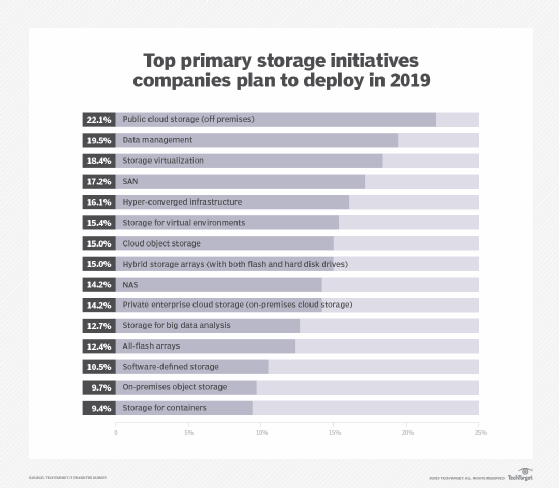
Anterovium - Fotolia
Storage Gateway basics to set an AWS hybrid storage strategy
AWS Storage Gateway deploys a gateway that connects on-premises tasks and applications to the AWS cloud. This sets your IT infrastructure up for disaster recovery and backup.
Modern application demands make storage expensive to deploy, challenging to provision and difficult to maintain, which is why businesses have increasingly turned to cloud-based storage services as part of a hybrid IT strategy.
AWS Storage Gateway is designed specifically for hybrid storage, as it connects local IT environments to AWS cloud infrastructure. It isn't necessarily intended to replace local storage, but it can alleviate local storage congestion, protect vital data for disaster recovery and offload backup tasks to the cloud.
Storage Gateway basics
Storage Gateway effectively enables you to employ AWS storage for on-premises tasks and applications. The actual gateway is deployed locally as a VM or physical appliance, and it uses a WAN connection to move data between the local data center and AWS.
You can configure the AWS hybrid storage service in three ways:
File gateways provides a file-based interface to Amazon S3 using the standard Network File System (NFS) 3 and 4.1. It also uses server message block (SMB) protocol versions 2 and 3 to store and retrieve objects. Once it's installed, any approved AWS workload or service can access the data.
The file gateway supports version control, cross-region replication and lifecycle policies. It also optimizes data movement and access through local caching, bandwidth management and other techniques.
Volume gateways handle volumes from local applications accessed as iSCSI devices. They can be used for caching, which effectively accelerates connections to frequently accessed data in the cloud by storing a local copy. It may seem counterintuitive, but this approach typically consumes far less local storage and uses extremely high-performance disk for the lowest possible latency.
Conversely, the volume gateway can be configured to store data locally and copy asynchronous point-in-time snapshots to Amazon S3. This employs the gateway for offsite backups and disaster recovery tasks.
Tape gateways act as virtual tape libraries. They create durable data backups to corresponding AWS archival storage tiers, such as Amazon S3 Glacier or Glacier Deep Archive. Tape gateways can eliminate or supplement a physical tape subsystem for large volumes of infrequently accessed data.

Operation and use cases
To create a storage gateway, use the AWS Management Console to select a region and pick file, volume or tape gateways. Then, select a host platform -- ESXi, Hyper-V, EC2 or a hardware appliance -- and download the corresponding image file.
If you deploy the gateway as a VM, allocate all of the disk space for the VM directly -- think thick provisioning rather than thin. Installation may take slightly longer but should yield better performance, since additional storage space won't be needed later.
Once the gateway is installed, connect it to AWS. Determine the IP address from the local VM console or hypervisor or through the EC2 console if it's deployed there. Then, use the AWS Management Console to associate the IP address with the desired AWS account. Activate the gateway by entering the appropriate time zone and a gateway name you'll remember.
Storage Gateway challenges
Although Storage Gateway can support a wide range of storage tasks and data types, there are several important limitations around latency, security, reliability and costs that users need to consider.
Your gateway choice will impact how you prepare the storage for use. For example, if you chose a file gateway, you may need to configure any local disks for cached storage and create a file share for access through NFS or SMB protocols. A volume gateway would require creating a volume, snapshot or recovery point, as well as an iSCSI target name. A tape gateway would require you to create virtual tapes, a desired number of tapes, tape capacity and the Glacier storage pool.
Pricing and availability
AWS Storage Gateway is a well-established service and widely available in most global AWS regions.
Pricing is typically broken into three components: storage, requests and transfers. Storage basically refers to capacity used -- usually in terms of objects or gigabytes. Other capacity uses, such as Elastic Block Store snapshots, may pose additional costs. Requests, such as gets, puts and deletes, can carry their own charges, as do certain storage tasks, such as the per-gigabyte data written to AWS storage by the gateway.
Finally, while it's typically free to transfer data into AWS storage, AWS will charge you per gigabyte for data transferred out of AWS Storage Gateway to on-premises storage. Taken together, these pricing elements can make storage costs tricky to interpret, so examine billing statements carefully.







